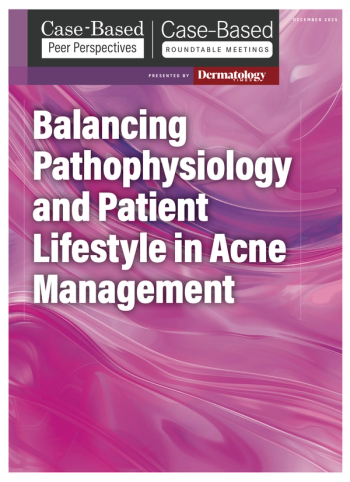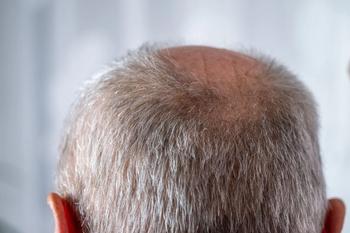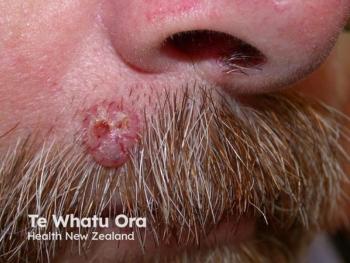
Clinuvel Completes Enrollment in Phase III Afamelanotide Vitiligo Trial
Key Takeaways
- CUV105 trial evaluates afamelanotide for vitiligo, focusing on systemic repigmentation in Fitzpatrick skin types III to VI.
- The trial compares afamelanotide with NB-UVB phototherapy against NB-UVB monotherapy, involving over 200 patients across three continents.
Clinuvel's phase III trial CUV105 enrolls 200 patients, exploring afamelanotide as a promising systemic treatment for vitiligo.
According to a recent news release from the company,
CUV105: A Global Phase III Trial Targeting Systemic Repigmentation
CUV105 is a randomized, multicenter, controlled phase III study designed to assess the efficacy and safety of afamelanotide in adolescent and adult patients with non-segmental vitiligo, with a specific emphasis on individuals with Fitzpatrick skin types III to VI. These populations often experience the greatest psychosocial burden due to the contrast between depigmented lesions and darker baseline pigmentation.
Conducted at 37 sites across the United States, Europe, and Africa—with 57% of patients enrolled in the US—CUV105 compares 2 treatment arms: (1) afamelanotide administered via subcutaneous implant every three weeks in combination with narrowband ultraviolet B (NB-UVB) phototherapy twice weekly, and (2) NB-UVB phototherapy monotherapy delivered on the same schedule. The treatment phase spans 20 weeks, followed by a 6-month observational period to evaluate the maintenance of repigmentation.
The primary endpoint is defined by achieving at least 50% total body surface area repigmentation, as measured by the Total Vitiligo Area Scoring Index (T-VASI50). Key secondary outcomes include localized assessments (F-VASI for face, head, and neck), durability of response, and multiple patient-reported outcomes. These include the Patient Global Impression of Change and the Vitiligo Noticeability Scale, as well as vitiligo-specific quality-of-life metrics (VitiQoL).
In response to participant and site feedback, the protocol was amended to offer patients initially randomized to NB-UVB monotherapy an opportunity to receive afamelanotide in combination with NB-UVB after completing the primary follow-up period.
Interim Observations and Case Reports
While full trial data are pending, clinical observations from CUV105 have been presented at recent international dermatology meetings, including the 2024 and 2025 American Academy of Dermatology conferences.2 Select case studies have also been publicly released to illustrate early treatment effects.
To date, 5 cases have been described in detail. These include patients with Fitzpatrick skin types IV and V and varying durations of disease (up to 20 years), who have shown measurable repigmentation—often within 4 weeks of initiating afamelanotide. In the most recent case, a 46-year-old man with a 2-decade history of vitiligo demonstrated clear repigmentation on the forearms and lower legs after receiving seven implants of afamelanotide and undergoing 40 NB-UVB phototherapy sessions. Patients uniformly reported treatment satisfaction and tolerability.
These reports suggest not only early onset of repigmentation but also continued melanocyte activity following the conclusion of therapy, raising the possibility of prolonged biological effects.
Addressing an Unmet Clinical Need
Vitiligo affects approximately 1 to 2% of the global population and is characterized by progressive loss of functional epidermal melanocytes. While the exact pathogenesis remains incompletely understood, the resulting hypopigmentation can be particularly distressing for individuals with darker skin types due to the greater contrast and stigma associated with visible skin changes.
Currently, the treatment landscape is limited. Only 1 topical immunosuppressant is approved for vitiligo in the US and EU, and it is indicated only for patients with less than 10% body surface involvement who have not responded to prior topical therapy. No systemic therapies have yet been approved.
Afamelanotide, a melanocortin 1 receptor (MC1R) agonist that stimulates melanin production, represents a non-immunosuppressive systemic option. Its potential to accelerate and stabilize repigmentation—especially in combination with NB-UVB—could provide a much-needed therapeutic alternative for patients with extensive disease or those inadequately controlled with current interventions.
Looking Ahead
Should CUV105 yield positive results, Clinuvel plans to advance afamelanotide into a second large-scale clinical trial (CUV107) and pursue regulatory engagement across Europe, North America, and Africa. The establishment of trial sites and clinician networks through CUV105 may also serve as a precursor to a future distribution infrastructure.
While promising, conclusions regarding the broader efficacy and long-term safety of afamelanotide in vitiligo must await the comprehensive analysis of phase III data. Nonetheless, this trial represents a critical inflection point in the evolution of vitiligo therapeutics, with systemic, non-immunosuppressive intervention emerging as a plausible treatment paradigm.
References
- Clinuvel recruits 200 patients in phase III vitiligo trial CUV105. News release. Global Newswire. Published May 7, 2025. Accessed May 14, 2025.
https://www.globenewswire.com/news-release/2025/05/07/3075714/0/en/CLINUVEL-recruits-200-patients-in-Phase-III-vitiligo-trial-CUV105.html - CLINUVEL introduces groundbreaking vitiligo program at the world’s biggest dermatology meeting, AAD 2025. News release. Clinuvel pharmaceuticals. Published March 4, 2025. Accessed May 14, 2025.
https://www.clinuvel.com/2025/03/clinuvel-introduces-groundbreaking-vitiligo-program-at-the-worlds-biggest-dermatology-meeting-aad-2025-20250304/
Newsletter
Like what you’re reading? Subscribe to Dermatology Times for weekly updates on therapies, innovations, and real-world practice tips.


















